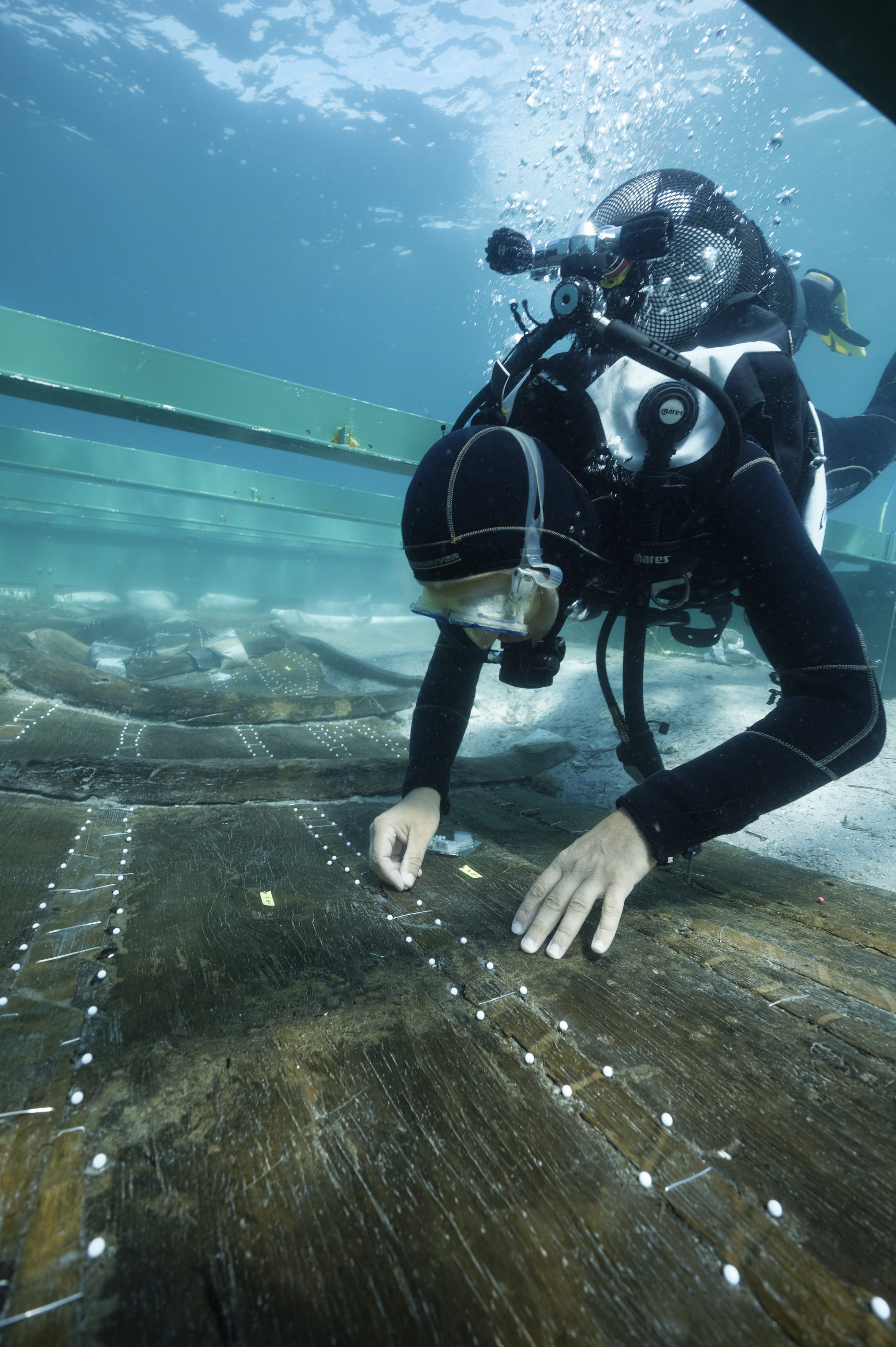Marine archaeologists have drummed up a bold plan to recover an ancient shipwreck that’s been laying on the seabed for over 3,000 years. Despite being hand-sewn in ancient times, the boat has managed to remain in unbelievably good condition.
Dubbed the “Zambratija boat”, the vessel measured a total of 10 meters (32 feet) long and 2.3 meters (over 7 feet) wide in its heyday, Giulia Boetto, a marine archaeologist at the French National Center for Scientific Research (CNRS), told IFLScience.
It’s named after the location of the site of the shipwreck’s discovery, the Zambratija Bay of Istria County in Croatia, along the coast of the Adriatic Sea.
Earlier this month, a team of divers from Center Camille Jullian and the Archaeological Museum of Istria began the task of removing sections of the ship from the seabed.
The researchers already have a rough idea that it’s dated somewhere between the 12th century and 10th century BCE, making it “the oldest entirely hand-sewn boat in the Mediterranean,” according to the French National Center for Scientific Research (CNRS).
“Its architecture and its construction, the assembly technique of the strakes, as well as the waterproofing system of the hull, have no equivalent in the Mediterranean area,” the Camille Jullian Center, a Croatian research organization connected to the CNRS, said in a statement.
A marine archaeologist takes a close look at the wreck of the Zambratija.
Image courtesy of © Philippe Groscaux/Mission Adriboats/CNRS/CCJ
Although its condition and design are remarkable, the researchers believe the wreck serves as a typical example of the ancient shipbuilding traditions that emerged in this corner of the Mediterranean.
“Due to all these architectural features, the types of assemblage employed and the dating, the Zambratija boat can be considered as the archetype of one of the sewn boat building traditions identified in the Adriatic,” the statement continues.
Laying at a depth of just 2.5 meters (over 8 feet), the shipwreck was first explored by researchers in 2008 but has since been the subject of a couple more dives, a report from 2019 explains.
The aim of the latest initiative is to remove it from the seabed and create a 3D reconstruction of the ship’s structure. They also hope to carry out a detailed analysis of its materials to reveal the secrets of its past.
In the longer term, the delicate nature of the wreck will require it to be “desalinated” in Croatia where it will be eventually passed to the Arc-Nucléart workshop in France, which specializes in restoring cultural artifacts.
Source Link: Divers Want To Recover This 3,000-Year-Old Shipwreck From Croatia's Seafloor
